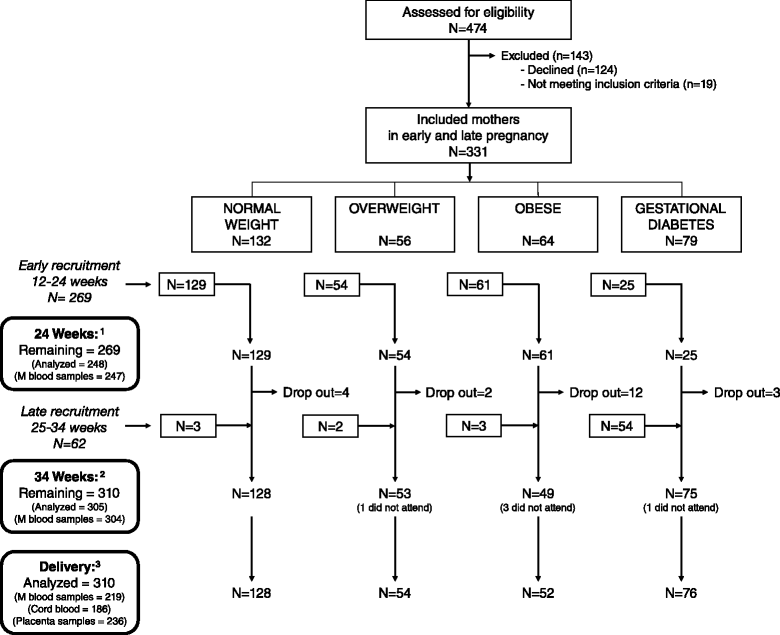Maternal, fetal and perinatal alterations associated with obesity, overweight and gestational diabetes: an observational cohort study (PREOBE)
- PMID: 26931143
- PMCID: PMC4774115
- DOI: 10.1186/s12889-016-2809-3
Maternal, fetal and perinatal alterations associated with obesity, overweight and gestational diabetes: an observational cohort study (PREOBE)
Abstract
Background: Maternal overweight, obesity, and gestational diabetes (GD) have been negatively associated with offspring development. Further knowledge regarding metabolic and nutritional alterations in these mother and their offspring are warranted.
Methods: In an observational cohort study we included 331 pregnant women from Granada, Spain. The mothers were categorized into four groups according to BMI and their GD status; overweight (n:56), obese (n:64), GD (n:79), and healthy normal weight controls (n:132). We assessed maternal growth and nutritional biomarkers at 24 weeks (n = 269), 34 weeks (n = 310) and at delivery (n = 310) and the perinatal characteristics including cord blood biomarkers.
Results: Obese and GD mothers had significantly lower weight gain during pregnancy and infant birth weight, waist circumference, and placental weight were higher in the obese group, including a significantly increased prevalence of macrosomia. Except for differences in markers of glucose metabolism (glucose, HbA1c, insulin and uric acid) we found at some measures that overweight and/or obese mothers had lower levels of transferrin saturation, hemoglobin, Vitamin B12 and folate and higher levels of C-reactive protein, erythrocyte sedimentation rate, ferritin, and cortisol. GD mothers had similar differences in hemoglobin and C-reactive protein but higher levels of folate. The latter was seen also in cord blood.
Conclusions: We identified several metabolic alterations in overweight, obese and GD mothers compared to controls. Together with the observed differences in infant anthropometrics, these may be important biomarkers in future research regarding the programming of health and disease in children.
Trial registration: The trial was registered at clinicaltrials.gov, identifier ( NCT01634464 ).
Figures

References
Publication types
MeSH terms
Substances
Associated data
LinkOut - more resources
Full Text Sources
Other Literature Sources
Medical
Research Materials

